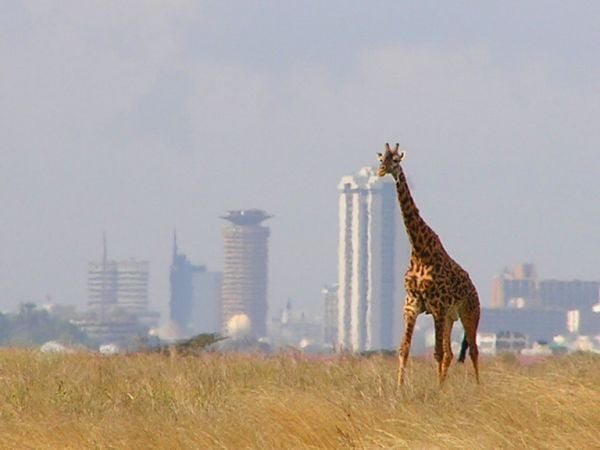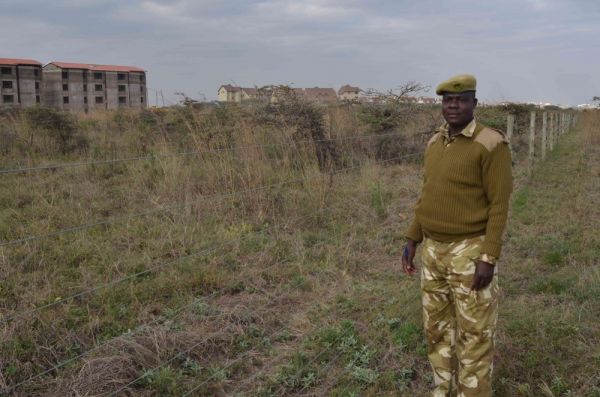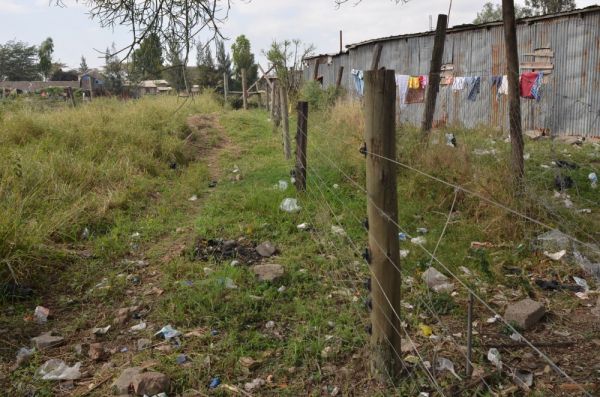The World’s Only Game Reserve Within a Major City is Threatened With Extinction

Nairobi National Park is threatened by development. Photo credit: Wikipedia
From a grassy hilltop near the southern end of Nairobi National Park tourists can look south over the Athi River Plain, a vast swath of savannah that once stretched uninhibited from Nairobi to the border with Tanzania. But today, their view is blocked by a row of cement factories and urban sprawl.
“That’s Kitengela,” says ranger Ernest Achieng (who asks that his real name not be used, per Kenya Wildlife Service policy), pointing to what was once a small truck stop but is now a bustling blue-collar town. “Five years ago, there were no buildings there. But people are buying the land and developing and erecting fences.”
Such development now threatens Nairobi National Park, the world’s only game reserve found within a major city. Home to lions, leopards and endangered black rhinos, NNP offers tourists the opportunity to observe wildlife with the skyscrapers of Nairobi’s skyline rising in the background. But the park is slowly being chipped away by encroaching highways, housing and industry.
NNP’s 30,000 acres form the southern portion of Nairobi. The north, west and east sides of the park are all fenced in, curving like a wide horseshoe into the city. Until development cut it off, the southern side was the only open part that allowed animals, especially wildebeest, in and out.

Ernest Achieng stands where the proposed Southern Bypass would cut through. Photo credit: Jason Patinkin
“We had the second greatest wildebeest migration,” said Nelly Palmeris, NNP senior warden, second only to the famous great migration in Tanzania’s Serengeti National Park. “But over time there’s a lot of settlement on the southern side, a lot of fencing, so the free movement of animals is not existing anymore.”
Indeed, in the 1960s, over 100,000 wildebeest migrated to Nairobi National Park each year during the July to August dry season. This year, only 70 animals made the trip.
Unplanned urban sprawl isn’t the only threat to the park. There is a constant threat of poaching—a rhino was killed for its horn just two weeks ago—and Palmeris says recent years have seen massive flooding that has hurt wildlife and vegetation; the floods are the result of paving over wetlands and green space in Nairobi, causing rainwater to rush into the lowland reserve. And the construction of a leather tanning factory just a few feet from the park fence in the southeastern corner has caused so much pollution that the Kenya Wildlife Service had to close a tourist entrance there a few years ago. The fumes from the tannery, Achieng said, were so corrosive they had to replace the metal roof of the ranger station once a year.
Perhaps above all, though, a series of bypasses planned around Nairobi to ease traffic congestion could permanently alter the park. One, the Greater Southern Bypass, would run south of the park and finish the job of cutting off the migration.
The second, the Southern Bypass, running along the northern park boundary—and the south side of the city—would actually enter the park for four kilometers, taking at least sixty acres of national park land in a move that conservationists say is an illegal encroachment. Dr. Paula Kahumbu, a prominent Kenyan conservationist and chair of advocacy group Friends of Nairobi National Park (FoNNaP) says the area chosen for the bypass is especially important for the park’s lions.

A shanty town on the edge of the park houses employees who work at the tannery. Photo credit: Jason Patinkin
“It’s not a very big chunk of land, but already moving even a fence is a loss of space for wildlife,” says Palmeris. “I wouldn’t want an inch of the park gone.”
Palmeris says that although she understands that developing the city’s infrastructure is necessary, it cannot be at the expense of the park. “The value of the park is priceless. In terms of biodiversity and in terms of value that this park has for the city, you would not want to touch this park. We are the lungs of the city. We purify the air. You don’t want to touch your lungs.”
The Kenya National Highways Authority has offered to compensate for taking the land by buying a chunk of the southern end of the park near Kitengela. “There is the urgent need to decongest the city by diverting traffic to more viable areas,” wrote KeNHA corporate affairs manager in a letter to a Kenyan paper. “It, surely, is not too much to ask, that KeNHA borrows a few metres of the national park.”
Dr. Kahumbu says that sets a worrying precedent. “Basically national parks would just become free land for development,” she says. “They take a piece of park and buy another piece of land and everything is supposed to be okay, but we think this will destroy not just this park but many parks to building roads.”
Kahumbu says part of the problem is Kenya’s decision-makers aren’t treating national parks like historical monuments in need of protection.
“Like Ft. Jesus of Mombasa,” she says, referring to a 500-year-old battlement on the coast. “Nobody would support demolishing it for a parking lot or something, even though it’s really valuable real estate.”









